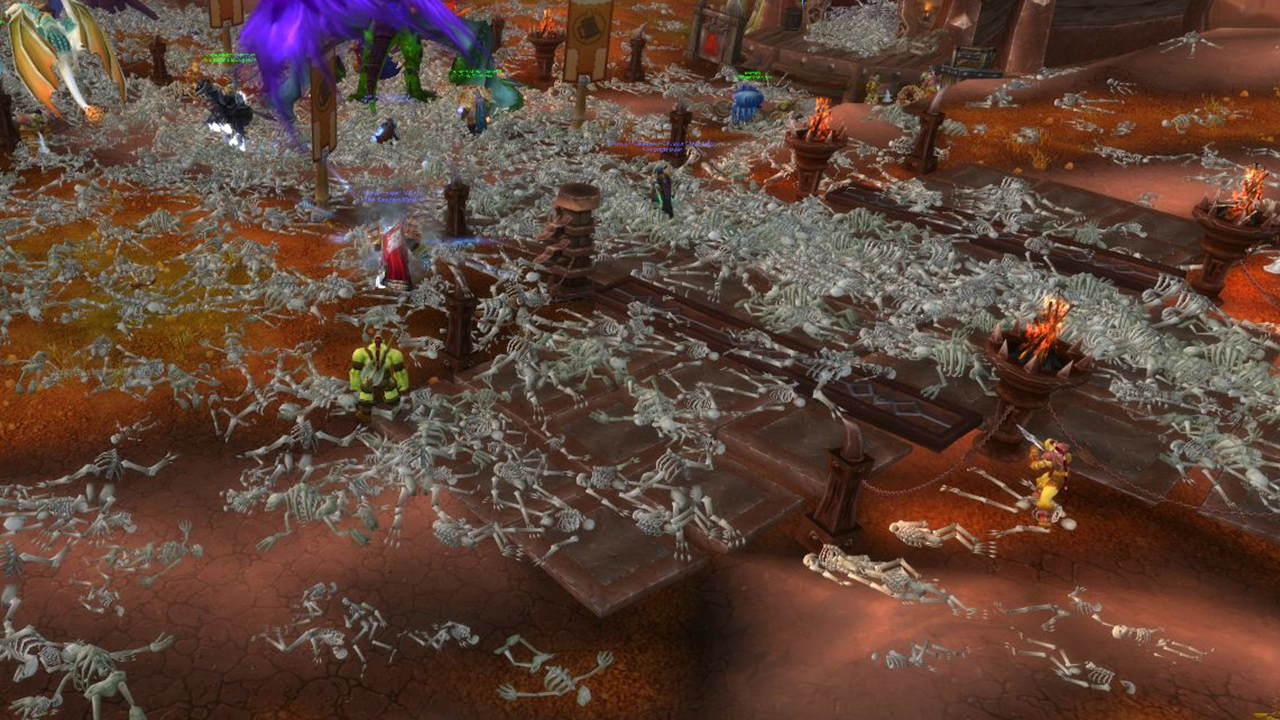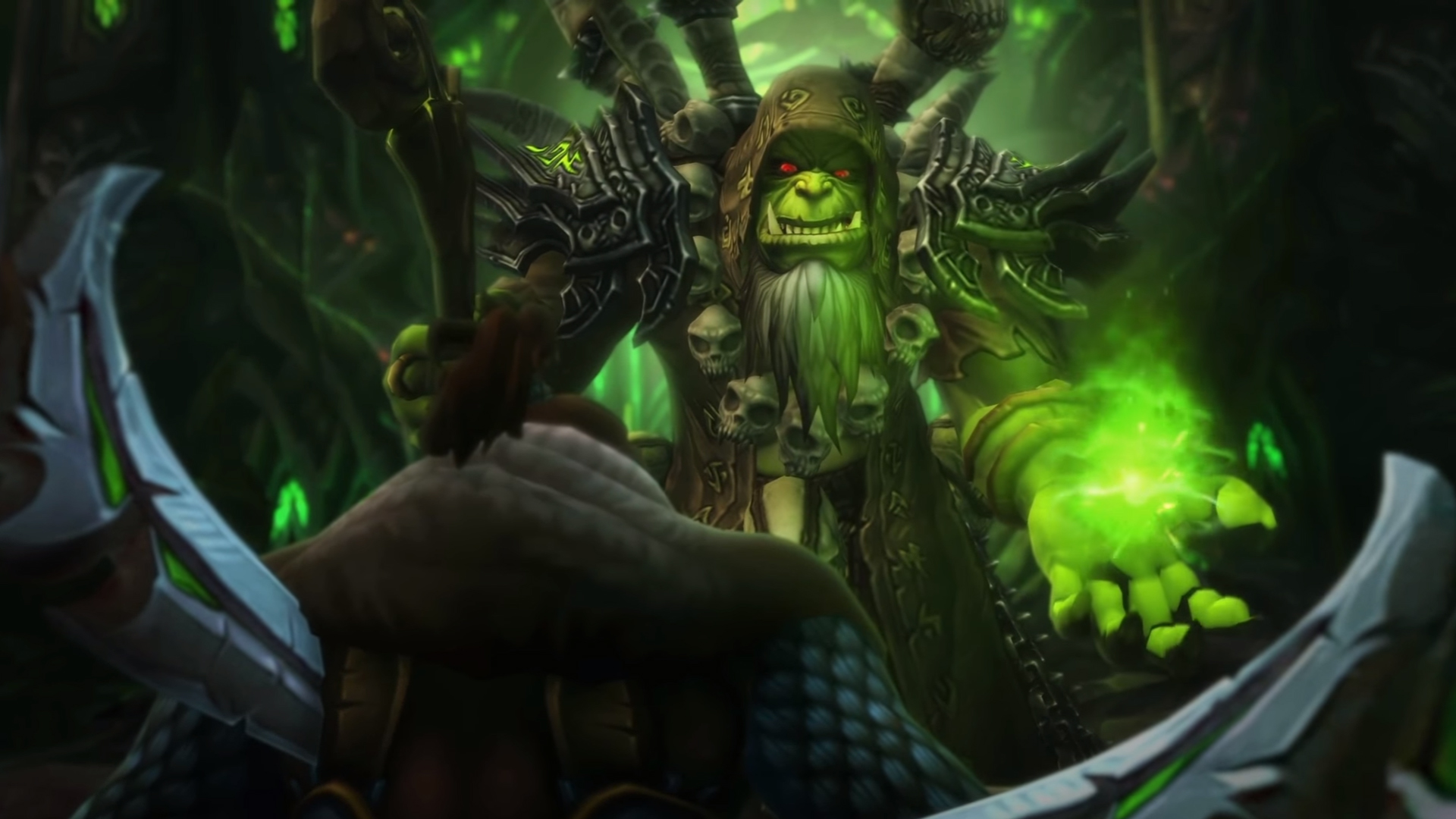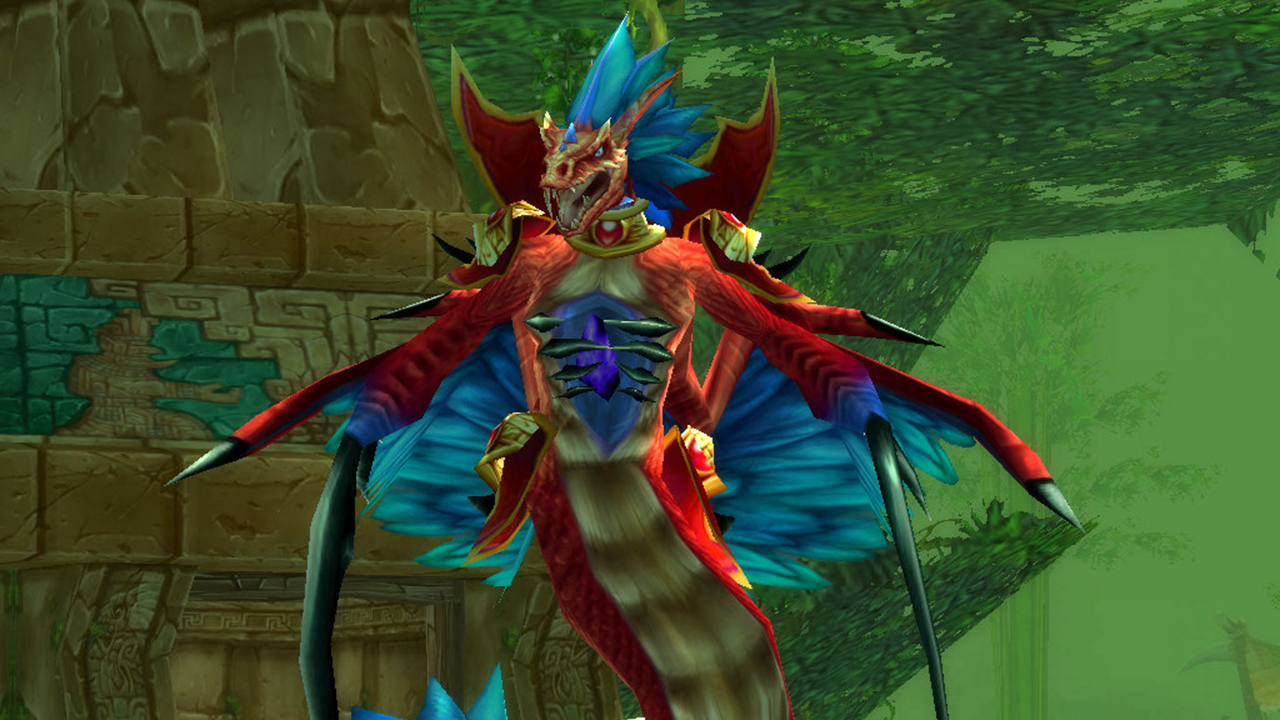How Blizzard coped with World of Warcraft's blood plague and other early disasters
How do you maintain control over an entire virtual world populated by millions of people? You don't.

If you stepped into the dwarven capital of Ironforge on September 13, 2005, you would find only bones. Lots of bones. The city, along with every other major population center in World of Warcraft, had been ravaged by a plague that slaughtered players by the thousands, their bleached bones covering every street.
At first, no one understood what was happening. Almost randomly, gouts of blood would begin spilling out of a player, and then another and another. Before long, entire cities became wastelands. And then the curse would subside, life would return to normal for a minute or an hour, and then it would happen all over again.
It was really scary when we didn't know why it was happening.
For those trapped inside the afflicted zones, they would die, run to their corpse, resurrect, run a few more feet, and die again. While thousands of players were throwing their hands up in the air in frustration, Blizzard employees were watching in horror. "It was really scary when we didn't know why it was happening," World of Warcraft lead engineer John Cash recalls. The corrupted blood incident might be remembered today as a bug gone wild, but for those at Blizzard, it's a reminder of the responsibility of playing god to a virtual world.
It's in the blood
For months, developers like John Cash had been hard at work preparing what would be their most exciting update to World of Warcraft yet. Zul'Gurub was a hard-as-nails raid that max level characters were eager to challenge. But Hakkar the Soulflayer, Zul'Gurub's final boss, had a nasty trick up his sleeve.
In his final moments, as countless raid parties across several servers bested him in battle, he attempted to siphon their blood to replenish his own health. To combat the desperate but deadly attack, players could willfully corrupt their own blood with a highly contagious disease—suffering steady damage but also tricking Hakkar into infecting and, ultimately, killing himself. "It started off as an oversight by our designers in their scripting," lead software engineer Collin Murray explains. "The corrupted blood was an effect and the designers forgot to clear it off your pet, so if your pet got despawned while it was in the encounter—"
"—It would save your pet with corrupted blood on it," Cash interjects. "The next time you summoned your pet there was no code to go 'Oh you're not in the raid, we should get rid of the corrupted blood.'"
No one knows who patient zero was, but at some point someone on the Archimonde server desummoned their pet while it was afflicted with corrupted blood and travelled to one of Azeroth's capital cities. When they summoned their pet, the corrupted blood spread like wildfire. "Every time you'd summon that pet you'd reinfect yourself and all the players around you and it wouldn't check if you were in a raid so you'd do it while you were in town and the entire town would get corrupted," says Shane Dabiri, Blizzard's chief of staff.
The biggest gaming news, reviews and hardware deals
Keep up to date with the most important stories and the best deals, as picked by the PC Gamer team.

World of Warcraft's history stretches across 13 years, but Legion might be its best chapter yet. Check out our review and our feelings on how it's holding up three months later.
Blizzard became aware of the event almost immediately, but it took days of investigating to figure out what exactly was happening. By then, more insidious players saw an opportunity to wreak havoc. By willfully infecting themselves, they could teleport to other cities and ensure the corruption spread. "People would just stay out of town and they'd say 'Don't go back to town because you're going to catch it again. Stay out in the wilderness,'" Dabiri says. "There were all these self-quarantine methods players were using to stay alive."
"Even once we figured out what was going on it made it really, really hard to fix it," Cash adds. "Our choices were either to go through every pet in every server in every country in the entire world and check if it had corrupted blood and get rid of it, or get really hacky code in where every time you summoned a pet it would check and see if it had corrupted blood on it and get rid of it."
For a time, the world of Azeroth was devastated. The plague wiped out entire cities, quietly dissipated when everyone was dead, and when players began to return, it would flare up all over again. Despite numerous hotfixes, it was nearly a month until Blizzard fixed the problem completely by making it impossible for pets to contract the disease.

"It was all unintentional, it was just a bug," Dabiri says.
Despite the massive loss of virtual life, the countless customer support calls, and the long hours spent fighting Warcraft's first real plague, Dabiri isn't sure he'd do it any differently. "It actually helped us create things that are better in the future," he says. "If that had never happened, we would never have had the wherewithal to create some of the cool events we have now. It was a good part of our history. It gave a lot of learning to the design teams, of things that they could do in the future that were more appropriately implemented."
It's a lesson that Dabiri, Cash, Murray, and everyone else at Blizzard would learn again and again. World of Warcraft was originally meant to follow in the footsteps of older MMOs like Everquest and Ultima Online, a way to humbly take what made those games special and "add that patented Blizzard polish," as Cash describes it. Instead, World of Warcraft became a culture phenomenon with an audience that quickly dwarfed the combined populations of all the MMOs that inspired it. And Blizzard, unprepared for its incredible success, became pathfinders in uncharted territory with millions of passengers along for the ride.
Lessons learned
Over 13 years, Dabiri, Cash, and Murray learned hard lessons on where you can and can't take millions of people. They bring up the Gates of Ahn'Qiraj, one of Warcraft's first server-wide events, as a perfect example. Ambitious by even today's standards, the 2006 event heralded the opening of two new raids, but first required server communities to gather a staggering number of resources to prepare for the war against the insectoid Silithus waiting inside. Meanwhile, the best guild on each server raced to complete a grueling series of quests to reforge a scepter that would be wielded by a single player who could then open the gates for everyone.
The event became a race among each server to see who could complete it first, but Warcraft's designers wanted the opening to feel momentous. Once the scepter was built and all the supplies gathered, players would have to wait five days to open the gates. "[Murray] and I are engineers so this is the part that killed us even though the designers thought it was the coolest thing ever," Cash explains. "You turn in this quest to the NPC and they said to come back to this spot in [five days] and they'll open this dungeon. And we're like, great, you just told everybody in the entire server to go to the same place at the same time. That's the last thing the engineers would want you to do."
The Alliance and Horde were working together and everybody was flagging themselves for PVP and killing anybody that was a lower level to keep them off their server.
When the Medivh server became the first to complete the requirements, players began doing something Blizzard didn't anticipate. Across the entirety of North America, players from other servers began making new characters on Medivh so that they could experience the opening for themselves. "The community on that server started getting upset saying 'Hey this is our server, we've got to keep them out,'" Cash says. "There became this weird community policing where the Alliance and Horde were working together and everybody was flagging themselves for PVP and killing anybody that was a lower level to keep them off their server so only they could see the event."
"It was pretty chaotic," Dabiri admits.
The moment the gates opened and the Silithus horde poured out to repel the invading players, thousands had gathered to witness the battle. "It was dreadful to watch because the client-side of WoW was never designed to handle 4,000 characters on your screen at one time," Cash says. "We will never make another Ahn'Qiraj gate opening, but we have some things to try and get a lot of that 'feel' and spread it out. We want to keep as much of the cool parts as we can without inflicting the bad parts."

Moments like that have been a part of World of Warcraft since even before it launched. The day of the midnight launch party, over 5,000 fans swarmed a Fry's Electronics in Irvine, California in anticipation hours before midnight. Murray recalls getting a phone call at nine in the morning, telling the team that players had already began lining up outside. By that evening, traffic in the area had come to a standstill as parked cars crowded every street and a line of eager customers snaked its way around the warehouse-sized building twice. "It was just a huge swarm of people," Murray says. "We were dumbfounded."
Days earlier, Dabiri says the team had concerns that no one would even show up. Instead, they ended up quickly burning through the 3,500 game copies they had prepared and had to send staff to the Irvine head office to gather and sell those reserved for Blizzard employees. They still ran out. "We didn't want anyone to walk away empty handed," he says.
Ever since World of Warcraft's release, Blizzard has again and again struggled to keep up with the surprising popularity of their virtual world. The studio has stumbled plenty of times along the way, but Dabiri never sees those moments as a failure.
"It's all part of the learning," he says. "One of the things we value here at Blizzard is that it's safe to take risks. Without taking risks you'll never find that cool, awesome new experience, and sometimes you'll learn something from the mistakes too."
With over 7 years of experience with in-depth feature reporting, Steven's mission is to chronicle the fascinating ways that games intersect our lives. Whether it's colossal in-game wars in an MMO, or long-haul truckers who turn to games to protect them from the loneliness of the open road, Steven tries to unearth PC gaming's greatest untold stories. His love of PC gaming started extremely early. Without money to spend, he spent an entire day watching the progress bar on a 25mb download of the Heroes of Might and Magic 2 demo that he then played for at least a hundred hours. It was a good demo.


